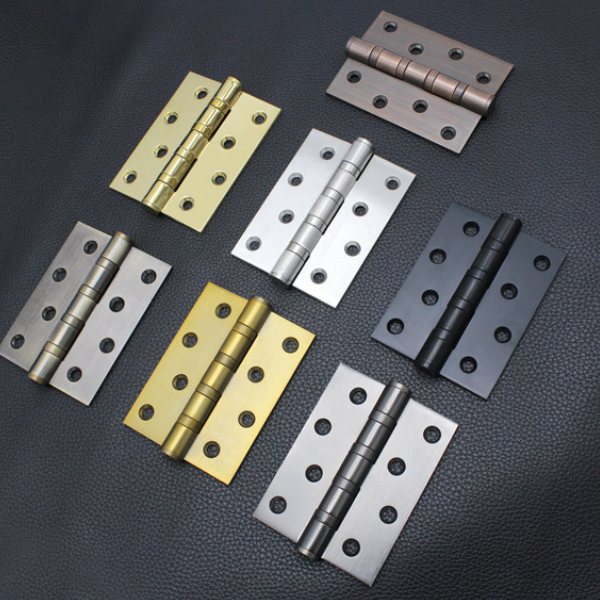Selecting the appropriate butt hinge is crucial for ensuring the functionality, durability, and aesthetic appeal of doors in various applications. Butt hinges, commonly used for doors, consist of two leaves connected by a pin, allowing the door to pivot open and closed. Choosing the right hinge involves considering factors such as door weight, material, size, finish, and specific functional requirements.
Understanding Butt Hinges
A hinge is a mechanical bearing that connects two solid objects, typically allowing only a limited angle of rotation between them. This is the first product in the door hardware category which is used during the installation of a door. For the smooth functioning and operation of a door, SDH offers hinges with ball bearing technology available in SS316, SS304 and SS201 grades of stainless steel.
Butt hinges are composed of two rectangular leaves connected by a central pin, enabling the door to swing open and closed. They are widely used in both residential and commercial settings due to their simplicity and effectiveness. The primary components of a butt hinge include:
- Leaves: The flat plates that attach to the door and the frame.
- Pin: The central rod that holds the leaves together and allows rotation.
- Knuckle: The curled part of the hinge that encases the pin, facilitating smooth movement.
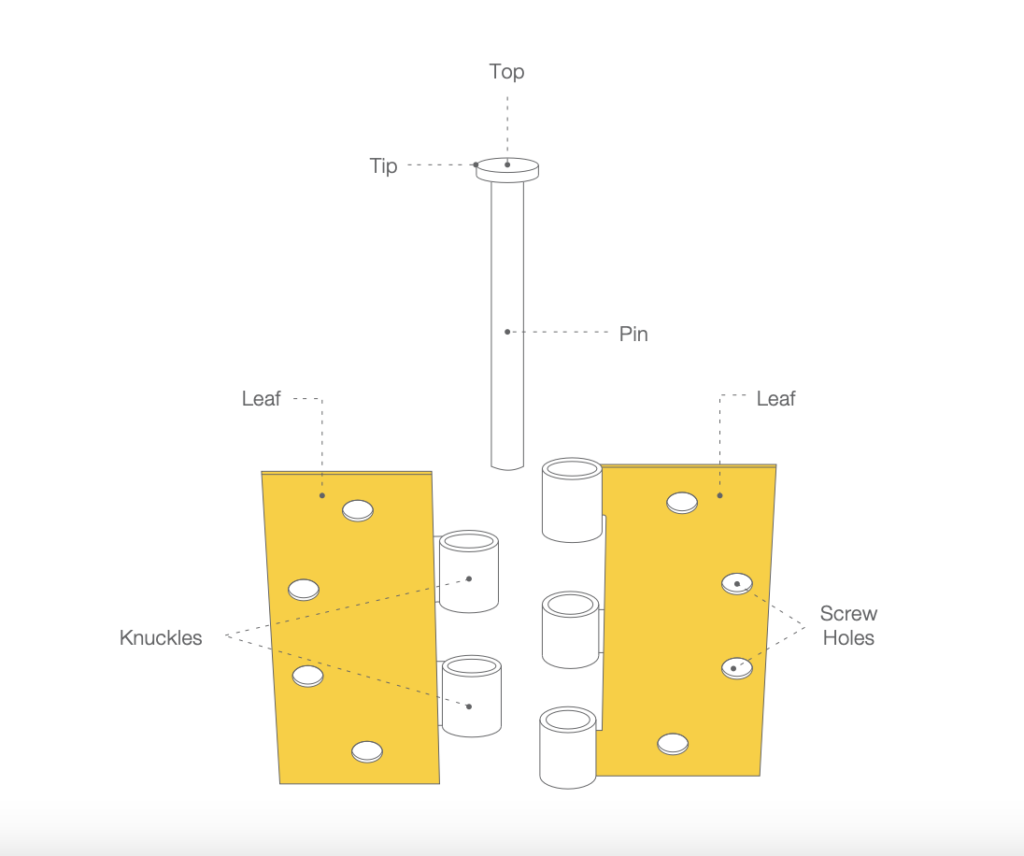
Types of Butt Hinges
Various types of butt hinges are designed to meet specific requirements:
- Plain Butt Hinges: Standard hinges suitable for lightweight interior doors.
- Ball Bearing Butt Hinges: Incorporate ball bearings between the knuckles to reduce friction, ideal for heavy doors or doors with high usage.
- Spring Butt Hinges: Equipped with a spring mechanism, these hinges automatically close the door, commonly used in cabinets and screen doors.
- Rising Butt Hinges: Designed for uneven or carpeted floors, these hinges lift the door slightly as it opens to prevent scraping.
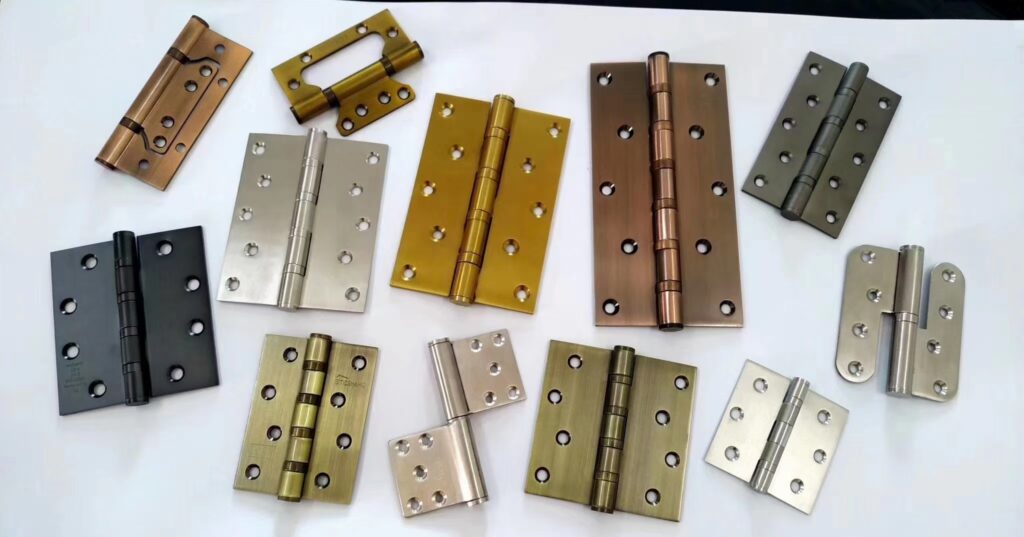
Factors to Consider When Choosing Butt Hinges
- Door Weight and Size: Heavier and larger doors require robust hinges. For doors over 60 inches tall, it’s often recommended to use three hinges for additional support.
- Material: The hinge material should match the door’s environment:
- Steel: Common and cost-effective for interior doors.
- Stainless Steel: Resistant to corrosion, suitable for exterior doors.
- Brass: Offers aesthetic appeal and durability.
- Aluminum: Lightweight and rust-resistant, ideal for interior applications.
- Finish: The finish affects both appearance and durability. Options include polished brass, chrome, matte black, and more. Choose a finish that complements the door’s design and withstands environmental conditions.
- Functionality: Consider additional features such as self-closing mechanisms or security features like non-removable pins, especially for exterior doors.
- Installation Requirements: Ensure the hinge type and size are compatible with the door and frame dimensions. Proper installation is essential for optimal performance.
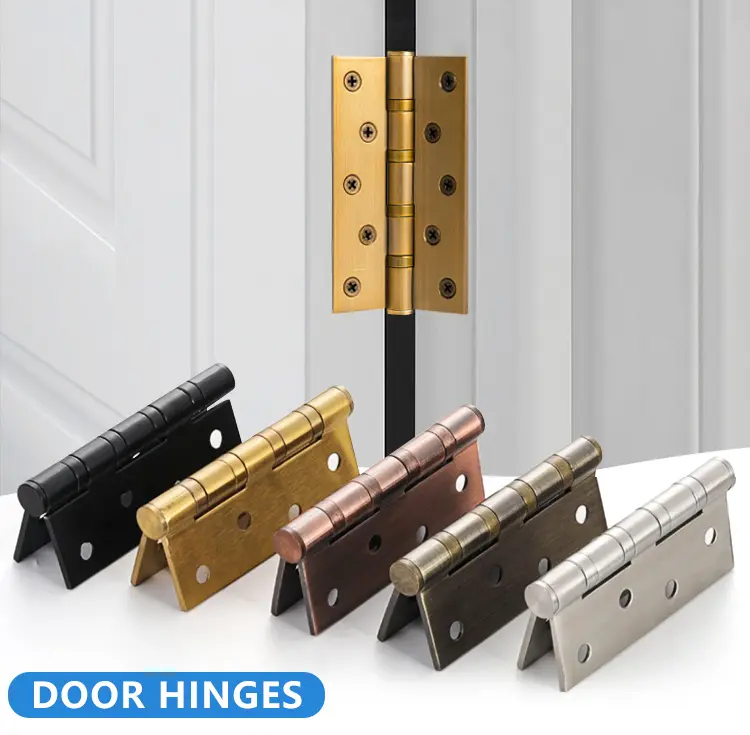
Hinge Mounting Position Recommendation
In the EN standard for hinges (EN 1935:2002) it is not specified where a hinge has to be fixed exactly. The recommendation shown below is only a guide and should be provided always as per the door specifications.
Figure 1: Use for medium weight doors. The benefit of this solution is that door will be held straight and wont warp.
Figure 2: Use for heavy weight doors. This alternative is recommended when door closing device is fixed on the door.
Figure 3: Use for door height over 2,100mm. This solution is for constructions with a high risk of door warping.
Figure 4: Use for door height over 2,100mm. This version is especially recommended when door closers are fitted on the door.
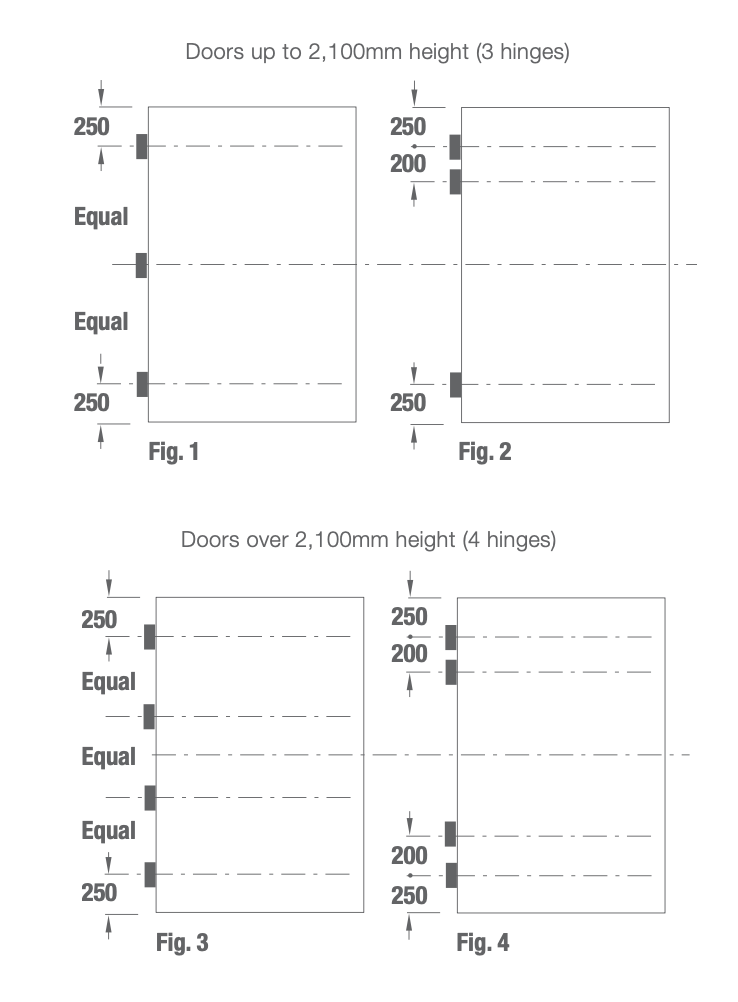
Adjusting the Door Weight
Normally, three hinges are fitted to each door. Their positions are determined by the weight of the door and its resistance to warping or whipping. Hinge specification is also determined by the adjusted door weight (based on the actual weight supplied by the manufacturer). The factors by which the door mass has to be adjusted for excessive widths of door are calculated by dividing the door height by its width. For a factor of 2 or greater, no allowance has to be made. When the factor is less than 2, the door mass has to be increased by the value required to bring the factor to 2 expressed as a percentage.
These percentages are shown in the side loading calculations table below.
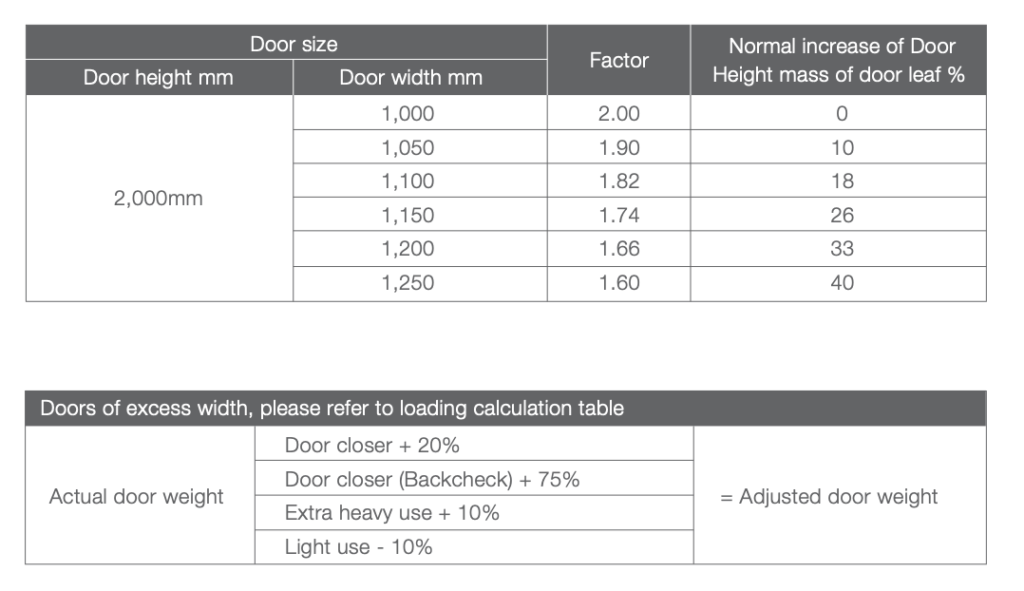
Installation Tips
- Preparation: Accurately measure and mark the hinge positions on both the door and frame.
- Mortising: Create recesses (mortises) to fit the hinge leaves flush with the door and frame surfaces.
- Alignment: Use a level to ensure the door hangs straight and swings smoothly.
- Securing Hinges: Attach the hinges with appropriate screws, ensuring they are tightened securely without over-tightening, which can cause misalignment.
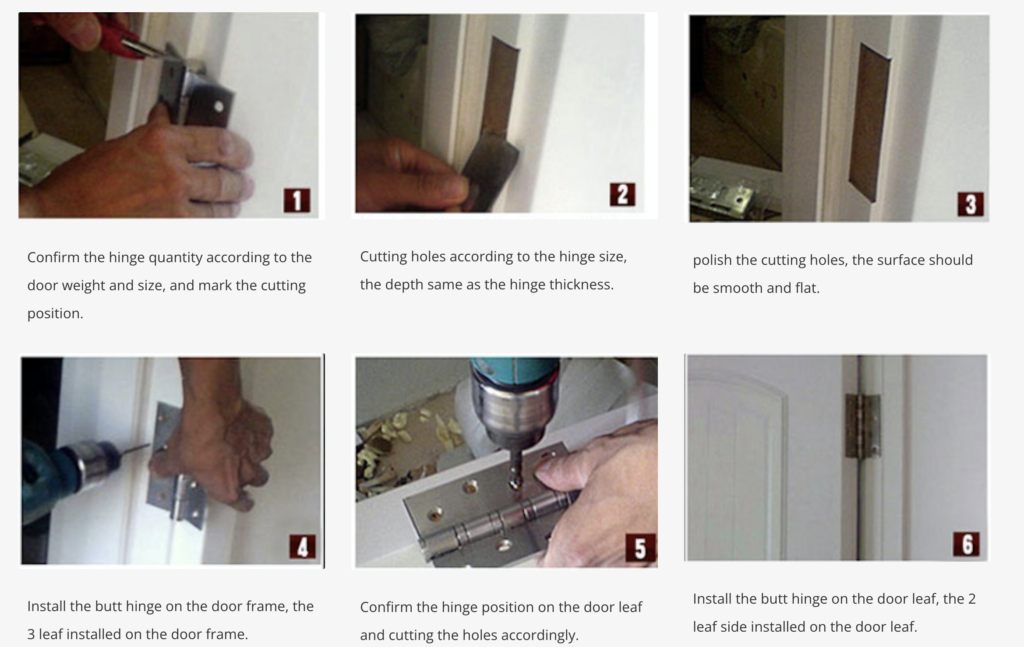
Maintenance
Regular maintenance extends the lifespan of butt hinges:
- Lubrication: Apply lubricant to the pin and knuckle to reduce friction and prevent squeaking.
- Inspection: Periodically check for signs of wear, corrosion, or damage.
- Cleaning: Wipe hinges with a damp cloth to remove dust and debris, avoiding harsh chemicals that can damage the finish.
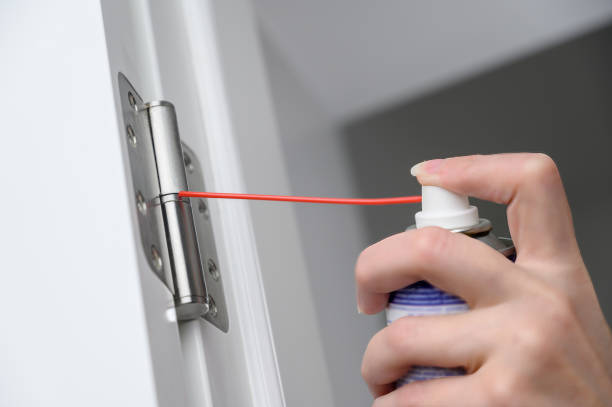
Top Manufacturers and Suppliers
- SDH Hardware: Offers CE-marked Euro standard EN1935 butt hinges for commercial and residential use.
- PROTEK Technology Co., Ltd.: Provides cost-effective stainless steel hinges.
- For more recommend supplier pls check TOP 10 Euro butt hinge supplier
Conclusion
Choosing the right butt hinge involves balancing functionality, durability, and aesthetics. By considering door weight, material, and usage frequency, you can ensure long-lasting performance. Always prioritize compliance with safety standards and consult professionals for specialized applications like fire-rated doors. For a detailed product catalog, refer to trusted suppliers like SDH Hardware.

